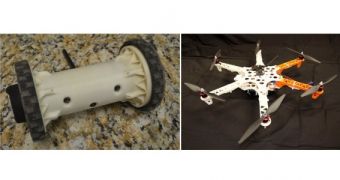Some time ago, a few months give or take, students were challenged to design and build 3D printed drones, at the behest of Virginia Tech. Now, the Robotic Research co-sponsored project is bearing fruit.
More specifically, Robotic Research has revealed a pair of drones that can be 3D printed according to specific tasks they would have to carry out.
All the while, the drones also meet the standards, so to speak, of “universal compatibility,” at least to a somewhat decent extent.
Which is to say, they can all use the same motors, sensor clusters and cameras. The parts that can't be 3D printed.
This is actually a very important advantage, because it's not exactly easy or cost-viable to design different assembly lines for every possible drone model.
Yet all the while, the drones can be 3D printed according to what role they are supposed to play on the battlefield (and outside of it).
One of the drones, called RAPTR, short for Remote Aerial Payload Transport Robot, has size rotors and can carry emergency medical equipment to dangerous areas, especially those accessible only by air.
The body can be adapted to carry different payloads though, which is to say, you can use the RAPTR to carry bombs instead of medical supplies if you want.
Not exactly a particularly happy thought, but it's not like risking pilots and planes or helicopters to try an aerial bombing is in any way any better. The drone can also scout of course, find survivors, etc.
The other drone is the Throwable Orientation Switching Robot. Or TOSR for short. It is small, durable and fast, printed from styrene and shaped like a tube with wheels (also 3D printed).
A camera and wireless transmitter are built into the drone, in addition to the motor. Terrain and other environmental elements will ultimately dictate what other features the TOSR gets.
It's a bit disheartening that drones seem to be finding so much use in warfare so quickly, considering the potential of them being used domestically or for search and rescue operations in cities. Or for pretty much anything really, like mail delivery and property surveillance.
Alas, warzones are the places where privacy concerns are the lowest (if they are taken into account at all), hence how quickly they are being accepted. Not exactly something that will change any time soon. Human mentality will need to change before widespread adoption happens, though regulations for the use of drones will need to be instated as well.

 14 DAY TRIAL //
14 DAY TRIAL //